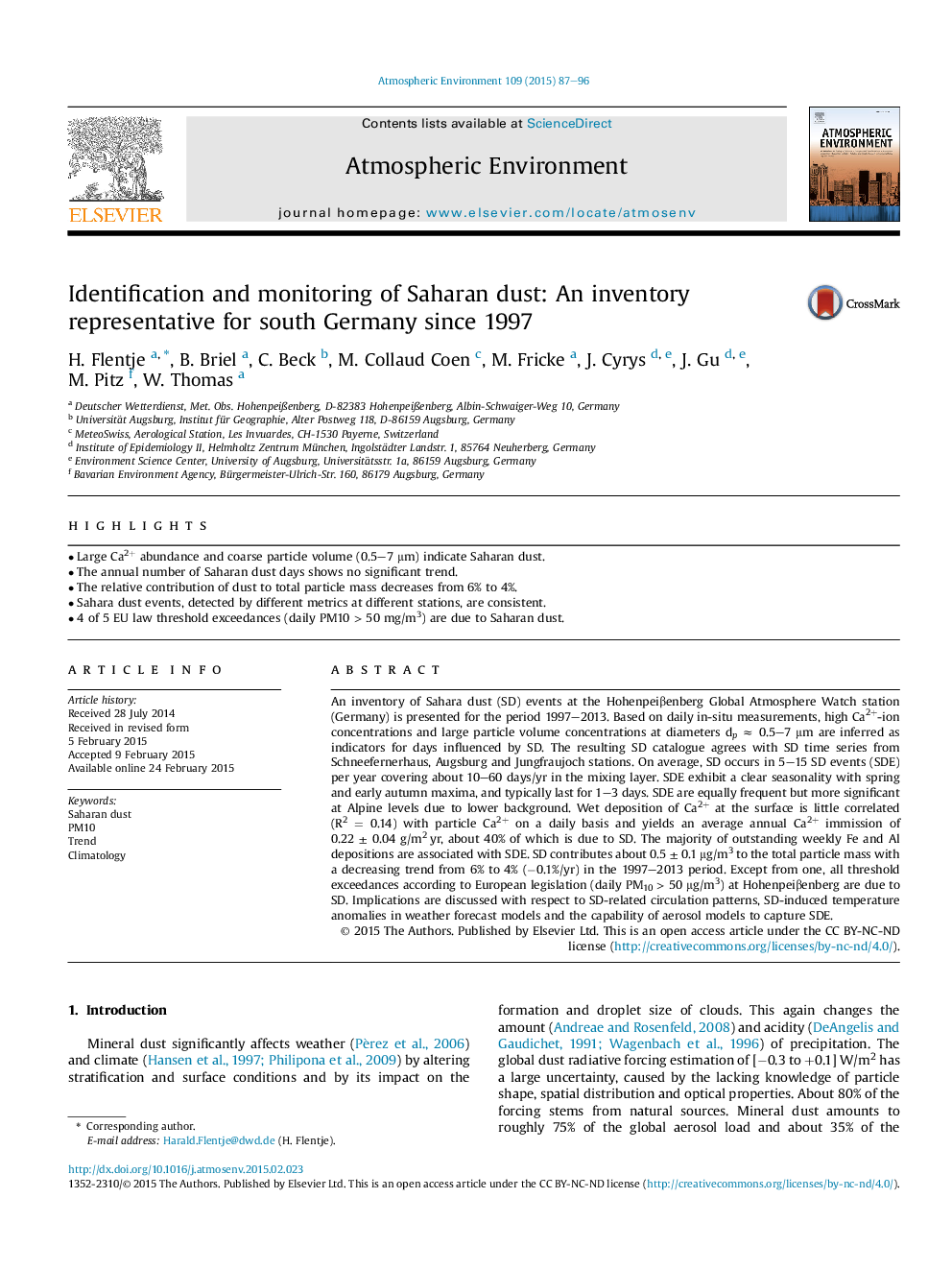| Article ID | Journal | Published Year | Pages | File Type |
|---|---|---|---|---|
| 6338206 | Atmospheric Environment | 2015 | 10 Pages |
Abstract
An inventory of Sahara dust (SD) events at the Hohenpeiβenberg Global Atmosphere Watch station (Germany) is presented for the period 1997-2013. Based on daily in-situ measurements, high Ca2+-ion concentrations and large particle volume concentrations at diameters dp â 0.5-7 μm are inferred as indicators for days influenced by SD. The resulting SD catalogue agrees with SD time series from Schneefernerhaus, Augsburg and Jungfraujoch stations. On average, SD occurs in 5-15 SD events (SDE) per year covering about 10-60 days/yr in the mixing layer. SDE exhibit a clear seasonality with spring and early autumn maxima, and typically last for 1-3 days. SDE are equally frequent but more significant at Alpine levels due to lower background. Wet deposition of Ca2+ at the surface is little correlated (R2 = 0.14) with particle Ca2+ on a daily basis and yields an average annual Ca2+ immission of 0.22 ± 0.04 g/m2 yr, about 40% of which is due to SD. The majority of outstanding weekly Fe and Al depositions are associated with SDE. SD contributes about 0.5 ± 0.1 μg/m3 to the total particle mass with a decreasing trend from 6% to 4% (â0.1%/yr) in the 1997-2013 period. Except from one, all threshold exceedances according to European legislation (daily PM10 > 50 μg/m3) at Hohenpeiβenberg are due to SD. Implications are discussed with respect to SD-related circulation patterns, SD-induced temperature anomalies in weather forecast models and the capability of aerosol models to capture SDE.
Keywords
Related Topics
Physical Sciences and Engineering
Earth and Planetary Sciences
Atmospheric Science
Authors
H. Flentje, B. Briel, C. Beck, M. Collaud Coen, M. Fricke, J. Cyrys, J. Gu, M. Pitz, W. Thomas,
